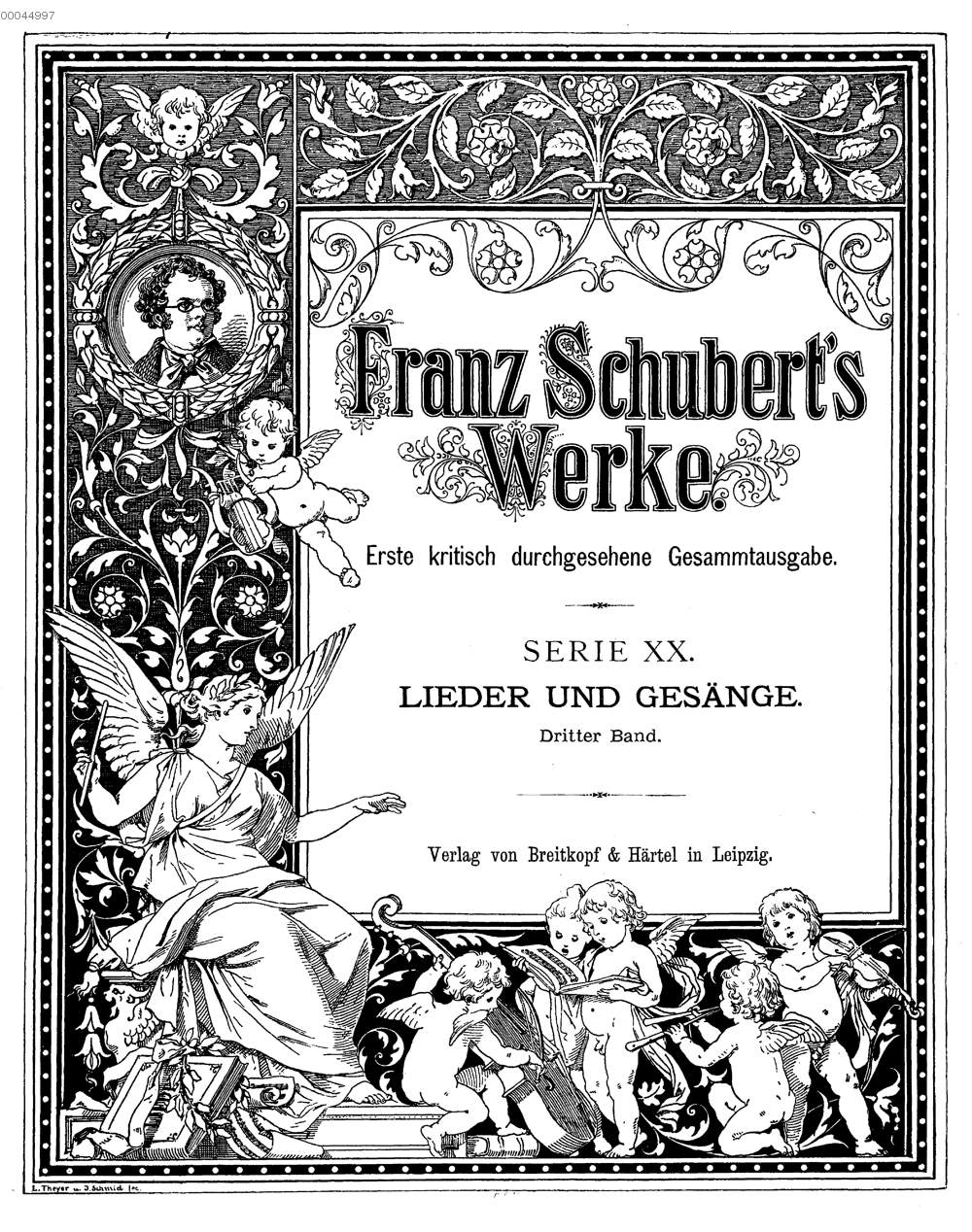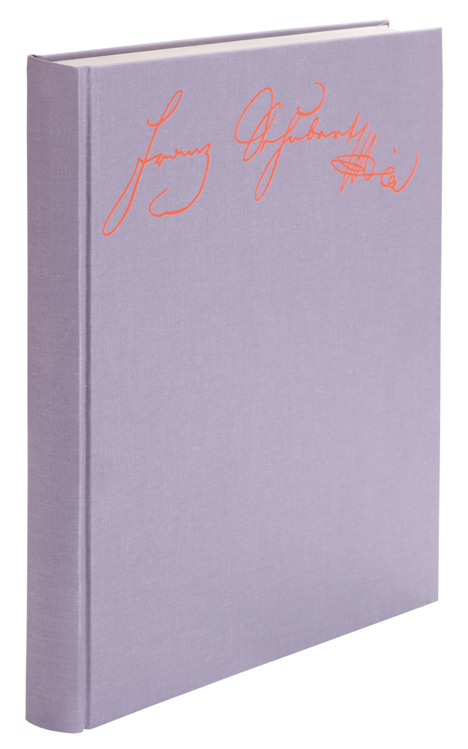|
Symphony No. 7 (Schubert)
Symphony No. 7 is the name given to a four-movement symphony in E major ( D 729) drafted by Franz Schubert in August 1821. Although the work (which comprises about 1350 bars) is structurally complete, Schubert only orchestrated the slow introduction and the first 110 bars of the first movement. The rest of the work is continued on 14-stave score pages as a melodic line with occasional basses or counterpoints, giving clues as to changes in orchestral texture. Schubert seems to have laid the symphony aside in order to work on his opera ''Alfonso und Estrella'', and never returned to it. The manuscript was given by Schubert's brother Ferdinand to Felix Mendelssohn and was subsequently acquired by Sir George Grove, who bequeathed it to the Royal College of Music in London. There are at least four completions: by John Francis Barnett (1881), Felix Weingartner (1934), Brian Newbould (1980), and Richard Dünser (2022). The work is now generally accepted to be Schubert's Seventh Symp ... [...More Info...] [...Related Items...] OR: [Wikipedia] [Google] [Baidu] |
Movement (music)
A movement is a self-contained part of a musical composition or musical form. While individual or selected movements from a composition are sometimes performed separately as stand-alone pieces, a performance of the complete work requires all the movements to be performed in succession. A movement is a section Section, Sectioning or Sectioned may refer to: Arts, entertainment and media * Section (music), a complete, but not independent, musical idea * Section (typography), a subdivision, especially of a chapter, in books and documents ** Section sig ..., "a major structural unit perceived as the result of the coincidence of relatively large numbers of structural phenomena". Sources Formal sections in music analysis {{music-stub ... [...More Info...] [...Related Items...] OR: [Wikipedia] [Google] [Baidu] |
Full Score
Sheet music is a handwritten or printed form of musical notation that uses musical symbols to indicate the pitches, rhythms, or chords of a song or instrumental musical piece. Like its analogs – printed books or pamphlets in English, Arabic, or other languages – the medium of sheet music typically is paper (or, in earlier centuries, papyrus or parchment). However, access to musical notation since the 1980s has included the presentation of musical notation on computer screens and the development of scorewriter computer programs that can notate a song or piece electronically, and, in some cases, "play back" the notated music using a synthesizer or virtual instruments. The use of the term "sheet" is intended to differentiate written or printed forms of music from sound recordings (on vinyl record, cassette, CD), radio or TV broadcasts or recorded live performances, which may capture film or video footage of the performance as well as the audio component. In everyday ... [...More Info...] [...Related Items...] OR: [Wikipedia] [Google] [Baidu] |
Timpani
Timpani (; ) or kettledrums (also informally called timps) are musical instruments in the percussion family. A type of drum categorised as a hemispherical drum, they consist of a membrane called a head stretched over a large bowl traditionally made of copper. Thus timpani are an example of kettle drums, also known as vessel drums and semispherical drums, whose body is similar to a section of a sphere whose cut conforms the head. Most modern timpani are ''pedal timpani'' and can be tuned quickly and accurately to specific pitches by skilled players through the use of a movable foot-pedal. They are played by striking the head with a specialized drum stick called a ''timpani stick'' or ''timpani mallet''. Timpani evolved from military drums to become a staple of the classical orchestra by the last third of the 18th century. Today, they are used in many types of ensembles, including concert bands, marching bands, orchestras, and even in some rock bands. ''Timpani'' is an Italian ... [...More Info...] [...Related Items...] OR: [Wikipedia] [Google] [Baidu] |
Trombone
The trombone (german: Posaune, Italian, French: ''trombone'') is a musical instrument in the Brass instrument, brass family. As with all brass instruments, sound is produced when the player's vibrating lips cause the Standing wave, air column inside the instrument to vibrate. Nearly all trombones use a telescoping slide mechanism to alter the Pitch (music), pitch instead of the brass instrument valve, valves used by other brass instruments. The valve trombone is an exception, using three valves similar to those on a trumpet, and the superbone has valves and a slide. The word "trombone" derives from Italian ''tromba'' (trumpet) and ''-one'' (a suffix meaning "large"), so the name means "large trumpet". The trombone has a predominantly cylindrical bore like the trumpet, in contrast to the more conical brass instruments like the cornet, the euphonium, and the French horn. The most frequently encountered trombones are the tenor trombone and bass trombone. These are treated as trans ... [...More Info...] [...Related Items...] OR: [Wikipedia] [Google] [Baidu] |
Trumpet
The trumpet is a brass instrument commonly used in classical and jazz ensembles. The trumpet group ranges from the piccolo trumpet—with the highest register in the brass family—to the bass trumpet, pitched one octave below the standard B or C trumpet. Trumpet-like instruments have historically been used as signaling devices in battle or hunting, with examples dating back to at least 1500 BC. They began to be used as musical instruments only in the late 14th or early 15th century. Trumpets are used in art music styles, for instance in orchestras, concert bands, and jazz ensembles, as well as in popular music. They are played by blowing air through nearly-closed lips (called the player's embouchure), producing a "buzzing" sound that starts a standing wave vibration in the air column inside the instrument. Since the late 15th century, trumpets have primarily been constructed of brass tubing, usually bent twice into a rounded rectangular shape. There are many distinc ... [...More Info...] [...Related Items...] OR: [Wikipedia] [Google] [Baidu] |
French Horn
The French horn (since the 1930s known simply as the horn in professional music circles) is a brass instrument made of tubing wrapped into a coil with a flared bell. The double horn in F/B (technically a variety of German horn) is the horn most often used by players in professional orchestras and bands, although the descant and triple horn have become increasingly popular. A musician who plays a horn is known as a list of horn players, horn player or hornist. Pitch is controlled through the combination of the following factors: speed of air through the instrument (controlled by the player's lungs and thoracic diaphragm); diameter and tension of lip aperture (by the player's lip muscles—the embouchure) in the mouthpiece; plus, in a modern horn, the operation of Brass instrument valve, valves by the left hand, which route the air into extra sections of tubing. Most horns have lever-operated rotary valves, but some, especially older horns, use piston valves (similar to a trumpet's ... [...More Info...] [...Related Items...] OR: [Wikipedia] [Google] [Baidu] |
Woodwind Instrument
Woodwind instruments are a family of musical instruments within the greater category of wind instruments. Common examples include flute, clarinet, oboe, bassoon, and saxophone. There are two main types of woodwind instruments: flutes and Reed aerophones, reed instruments (otherwise called reed pipes). The main distinction between these instruments and other wind instruments is the way in which they produce sound. All woodwinds produce sound by splitting the air blown into them on a sharp edge, such as a reed (mouthpiece), reed or a fipple. Despite the name, a woodwind may be made of any material, not just wood. Common examples include brass, silver, cane, as well as other metals such as gold and platinum. The saxophone, for example, though made of brass, is considered a woodwind because it requires a reed to produce sound. Occasionally, woodwinds are made of earthen materials, especially ocarinas. Flutes Flutes produce sound by directing a focused stream of air below the edge ... [...More Info...] [...Related Items...] OR: [Wikipedia] [Google] [Baidu] |
Franz Schubert's Works
Franz Schubert's Works: Complete and Authoritative Edition (german: Franz Schubert's Werke: Kritisch durchgesehene Gesammtausgabe), also known as the Collected Edition, is a late 19th-century publication of Franz Schubert's compositions.Deutsch 1951, p. xiii The publication is also known as the Alte Gesamt-Ausgabe ("the former complete edition"), abbreviated as AGA, for instance in the 1978 edition of the Deutsch catalogue, in order to distinguish it from the New Schubert Edition. Publication The twenty-two series (some in several volumes) were published from 1884 to 1897 by Breitkopf & Härtel. Eusebius Mandyczewski was one of the main editors. From 1965 Dover Publications started to reprint this edition, and later it was made available at the IMSLP website. Content I. Symphonien (Nos. 1-8) Editor: Johannes Brahms. Issued 1884. Two volumes (Symphonies 1–3; Symphonies 4–6/8–9). Reprinted: Dover Publications, 1978. II. Overtüren und Andere Orchesterwerke Editor: Joh ... [...More Info...] [...Related Items...] OR: [Wikipedia] [Google] [Baidu] |
Breitkopf & Härtel
Breitkopf & Härtel is the world's oldest music publishing house. The firm was founded in 1719 in Leipzig by Bernhard Christoph Breitkopf. The catalogue currently contains over 1,000 composers, 8,000 works and 15,000 music editions or books on music. The name "Härtel" was added when Gottfried Christoph Härtel took over the company in 1795. In 1807, Härtel began to manufacture pianos, an endeavour which lasted until 1870. The Breitkopf pianos were highly esteemed in the 19th century by pianists like Franz Liszt and Clara Schumann. In the 19th century the company was for many years the publisher of the ''Allgemeine musikalische Zeitung'', an influential music journal. The company has consistently supported contemporary composers and had close editorial collaboration with Beethoven, Haydn, Mendelssohn, Schumann, Chopin, Liszt, Wagner and Brahms. In the 19th century they also published the first "complete works" editions of various composers, for instance Bach (the Bach-Gesells ... [...More Info...] [...Related Items...] OR: [Wikipedia] [Google] [Baidu] |
Neue Schubert-Ausgabe
Franz Schubert (1797–1828): New Edition of the Complete Works (), commonly known as the New Schubert Edition (NSE), or, in german: Neue Schubert-Ausgabe (NSA), is a complete edition of Franz Schubert's works, which started in 1956 and is scheduled to conclude in 2027.Franz Schubert (1797–1828): New Edition of the Complete Works at website. Franz Schubert (1797–1828): Neue Ausgabe sämtlic ... [...More Info...] [...Related Items...] OR: [Wikipedia] [Google] [Baidu] |
Otto Erich Deutsch
Otto Erich Deutsch (5 September 1883 – 23 November 1967) was an Austrian musicologist. He is known for compiling the first comprehensive catalogue of Franz Schubert's compositions, first published in 1951 in English, with a revised edition published in 1978 in German. It is from this catalogue that the ''D'' numbers used to identify Schubert's works derive. Life Deutsch was born in Vienna on 5 September 1883 in a Jewish family."Otto Deutsch" profile at the Following his studies of art history and literature in Vienna and , he worked as an assistant at the ... [...More Info...] [...Related Items...] OR: [Wikipedia] [Google] [Baidu] |







